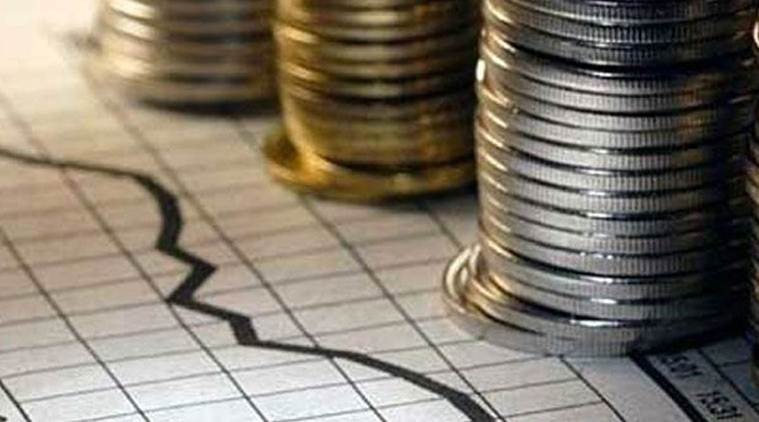Manufacturing growth is seen slowing to 2.0 per cent in 2019-20 from 6.9 per cent last year, while construction is expected to post a growth of 3.2 per cent in 2019-20 from 8.7 per cent last year.
WITH A sharp slowdown in manufacturing and construction, and the only major support coming from government expenditure, the Gross Domestic Product (GDP) growth rate is seen slumping to 5.0 per cent, the lowest since the 2008 economic crisis, according to data released by National Statistical Office (NSO).
With this, the GDP growth rate is expected to rise only marginally to 5.25 per cent during October-March, the second half of the financial year, from 4.75 per cent in the first half. A major area of concern for policymakers is that with the exception of government expenditure, all other demand drivers — private consumption, investment and exports — are flagging. Two major employment generators are also showing signs of a slump, with growth in manufacturing seen slowing to a 15-year low and construction to a six-year low.
Explained | Why even the government expects India’s GDP to grow at 5% this year
To make matters worse, the Centre’s spending momentum, which dipped in October-November 2019, could slow further as revenue concerns necessitate an expenditure squeeze by both the central and state governments in the ongoing quarter. The growth rate in terms of Gross Value Added (GVA), which is GDP minus net product taxes and reflects growth in supply, is seen slowing to 4.9 per cent in 2019-20 from 6.6 per cent in the previous year.
Stress hits job sectors
sharp slide in growth recorded by two employment-intensive sectors, construction and manufacturing, is expected to trigger concern. Government expenditure has been the only source of support, but shortfalls in revenue limits the headroom even here.
The GDP growth estimate of 5.0 per cent is at the same level as projected by the RBI in its monetary policy review last month. The RBI had cut the GDP forecast to 5.0 per cent last month from its earlier forecast of 6.1 per cent. The nominal GDP growth rate, which accounts for inflation, is estimated at 7.5 per cent in 2019-20 — only 2.5 percentage points higher than the real GDP growth estimate and lower than 11.2 per cent in the previous year. The first advance estimates of GDP are released early to aid Budget calculations for the upcoming financial year.
With the lower nominal GDP growth rate, the government’s fiscal math is also expected to take a hit. The Budget estimate for 2019-20 had pegged the GDP at Rs 211 lakh crore while the first advance estimates have pegged the nominal GDP at Rs 204 lakh crore, broadly implying that the fiscal deficit will breach the Budget target of 3.3 per cent of the GDP to 3.4 per cent of the GDP.
A sector-wise breakup of the data shows the sharpest fall in manufacturing and construction, with only two out of eight sectors — mining and quarrying, and “public administration, defence and other services” — estimated to post a higher growth rate than the previous year.
Manufacturing growth is seen slowing to 2.0 per cent in 2019-20 from 6.9 per cent last year, while construction is expected to post a growth of 3.2 per cent in 2019-20 from 8.7 per cent last year. Agricultural growth is seen at 2.8 per cent in 2019-20 from 2.9 per cent in 2018-19.
Private consumption is estimated to slow to 5.8 per cent this financial year from 8.1 per cent in 2018-19, while gross fixed capital formation has fallen from 29.3 per cent to 28.1 per cent reflecting weak private investment, the data showed. Economists said the rise in rabi sowing will provide support to agricultural growth in the ongoing quarter, even though the assumption of government spending for the second quarter seems optimistic given the shortfall in receipts.
Aditi Nayar, principal economist, ICRA Ltd, said: “The YoY rise in rabi sowing amid healthy groundwater and reservoir levels, bodes well for agricultural growth and rural sentiment, particularly in the ongoing quarter. However, the momentum of spending by the central government dipped in October-November 2019. We are apprehensive that revenue concerns may necessitate an expenditure squeeze by the central and state governments in the ongoing quarter, which has emerged as a key risk to the pace of economic growth.”
Sunil Kumar Sinha, principal economist, India Ratings, said: “With the exception of government expenditure, all other demand drivers namely private consumption, investment and net exports are down and out. The growth slowdown especially in private consumption to 5.8% in FY20 from 8.1% in FY19 has taken the sting out of FY20 GDP growth because this alone constitutes 57.4%of the total GDP. There are risks to an advance estimate of 5% GDP growth. It has been assumed that private consumption, government expenditure and investment will grow at 7.3%, 8.5% and (-)0.5%, respectively in 2HFY20. Among these, the assumption related to private consumption looks somewhat unrealistic if festival demand is taken as an indicator.”
The advance estimates of GDP are obtained by extrapolation of indicators like the industrial production index of the first seven months of the financial year; financial performance of private listed companies up to September; first advance estimates of crop production; accounts of central and state governments; deposits and credits; passenger and freight earnings of railways; passengers and cargo handled by civil aviation; cargo handled at major sea ports; and, commercial vehicles sales available for first eight months of the financial year.
Source: Read Full Article





